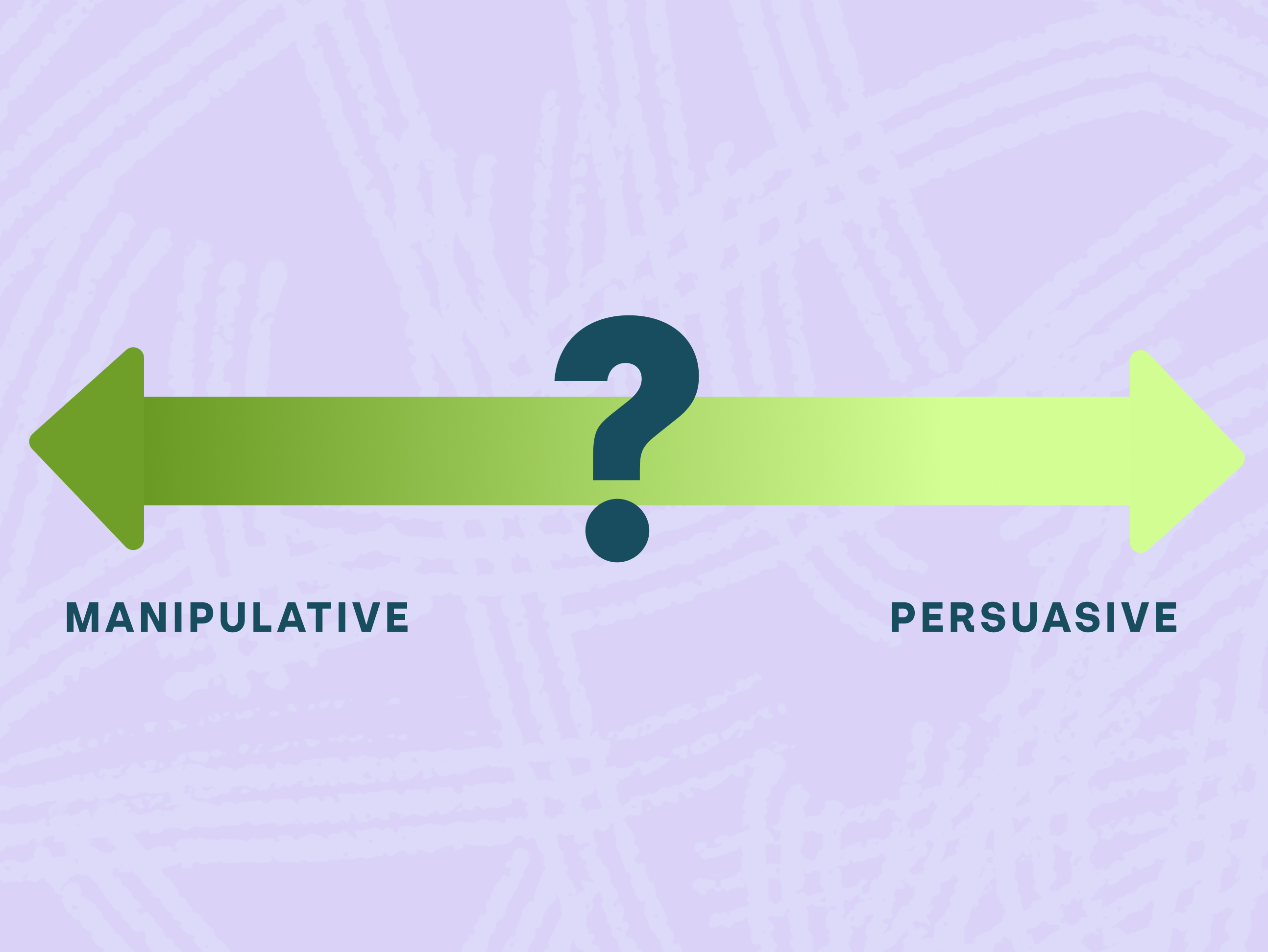Scale your UX Practice and Culture

The current state of UX.
1.21 jigawatts! Great Scott! Fire up the flux capacitor because where we’re going, we don’t need roads. When Doc Brown built a time machine, he probably wasn’t considering the user experience when he opted for a crowded, two-seater Delorean that had to go 88mph to function.
Okay, okay. You get it. We’re big fans of Back to the Future here at ZoCo. The point of my poor movie reference is that we are progressing further and faster into the digital age more than anytime in history.
Companies are scaling and innovating to stay ahead of the curve and meet the needs of their customers when and where they need it. As companies, especially those in the tech sector, grow their product teams, they are also becoming more mature in seeing the value of UX specifically, and are putting an emphasis on expanding this practice.
As UX practice continues to expand, UX teams are becoming more involved across the organization as a whole and are able to make a larger impact. Both on improving product and experience design, as well as (and maybe more importantly), improving the company’s knowledge and understanding of its customers.
Even companies not directly in the software or technology sector are growing their teams. As an example, we have clients in retail, energy, banking, CPG, and insurance—all of whom are growing their product and UX teams because they see the value it provides across the entire company.

Goals & Desires
Organizations today are looking for ways to increase the impact of their UX practice. This can, and should, be accomplished in multiple ways:
- Scale the UX team and practice
- Improve UX culture and mindset across the entire organization
- Grow the maturity and effectiveness of the UX practice
By taking this 360° approach, companies are more likely to meet its potential, and truly craft experiences that their users and customers love. Ah, yes. You know, that warm, fuzzy feeling they get when they interact with your product.
It also leads to more day-to-day wins. Like reducing time and money spent on issues and re-works, hitting deadlines, improving the quality of work, increasing output, crushing goals, and much more.
Sounds great, sure!
But it's not all flowers and rainbows. There are challenges.
.png)
What are the current challenges?
There are some common challenges we see UX teams and organizations deal with as they grow, from teams being overstretched to finding themselves working in silos. Unfortunately, these challenges are not exclusive to one industry or company size.
1. UX teams are overstretched.
Nearly every company we work with experiences this same problem. UX teams cannot keep up with the demand. As organizations continue to realize the value of UX and integrate their teams throughout the organization, the levels of responsibility and expected output rises. And this increase in demand outpaces the UX team’s growth.
You have all these great ideas but not enough time or resources to get them done quickly, and with a high degree of quality.
Imagine having to wait three hours just to get into an amusement park. And then wait another few hours in line at each ride. There comes a point when people are not willing to wait for what they want, and they’re going to find it somewhere else. The point? The longer you wait to meet the exact needs of your customers, the more likely they are to go somewhere else to fill their needs.
So hire more people! Build more rides! Unfortunately, it’s not that easy.
Growing the UX team is a challenge in and of itself. Whether you need additional team leads, designers, researchers–some teams are not granted the additional resources needed to expand the team, like the additional payroll, recruiting efforts, etc.
And the teams that are given the green light to hire more UXers often struggle in a hyper competitive environment to attract the talent they need. Oh, yeah–that amusement park? I forgot to mention there is a nice, shiny new one across the street, too. And they offer competitive pay and great benefits. After all, UX is in demand across the market—especially within growing software and technology companies.

Not only are UX team members stretched and overextended, so are product and UX leaders.
These roles are extremely important and time-demanding as is, but now they call for attending even more meetings, building new processes, and managing a host of things, like on-going change, distributed teams, internal bureaucracy, and more.
If you’re not pulling your hair out just thinking about all those meetings, well, good on you! But come on, let’s put an end to the meetings about meetings, already. Sheesh.
2. Growth breeds reactivity.
UX teams, by nature, tend to be more strategic with long term views of the work they prioritize. But in a growing company, they find themselves reacting to put out fires and to the urgent request of the day. These could include product issues or bugs, sales team requests, or a new initiative from leadership.
UX teams unfortunately find themselves living in the reactive “now” rather than prioritizing the ideal future state or innovation.
High growth also means there is an undercurrent of constant change management. What worked for the company at 50 or 250 employees, does not work at 800. Teams must pivot, processes must be evaluated and improved, change must be managed.
Priorities change, finish lines move, life happens. Teams can struggle with these changes and how to best navigate all the new and existing responsibilities and how to prioritize them. While reactivity cannot be eliminated completely, we can work towards minimizing it.
3. Teams fall prey to siloing.
Within most organizations, teams find themselves working in silos. Whether it is by subject matter expertise (UX, engineering, product), or siloed by focus area (empowered teams, squad models, etc.).
A nice quiet office, no distractions, no one asking where their stapler went… Where do I sign up?!

Don’t get us wrong, sometimes it's necessary (and preferred) to lock yourself in an office and be heads down. But that’s not what we’re talking about.
By their nature, most companies are organized into tribes. And these tribes are constantly learning and developing, but don’t always have the right tools, processes, and rituals in place to share knowledge equally.
This is especially difficult for growing teams, where new folks are on-boarded constantly. They are trying to get up to speed on what lives largely in their teammates’ heads.
Most UX and product teams are also insular to the experiences of the current team. At least within many communities, we’ve found most product teams get their knowledge, idea sharing, collaboration, and peer mentorship from within their current employer.
Product and UX communities are often fragmented. There is limited interaction between people in similar roles at different companies. People at different organizations can provide a lot of value to each other—sharing how they are navigating change and what is or is not working for them. In real time. Like a vulnerable peer group or roundtable setting. While this collaboration does happen in more mature UX markets, we’ve found that true integration and collaboration across companies is not common in many communities.
4. Organizational UX maturity can fall behind.
There are still challenges with overall organizational UX maturity within most companies. Of course the iterative and customer centric culture of user experience should exist within your UX or product team, but it needs to extend beyond.
As an overall organization, most companies have a long way to go to bring this UX mindset into their operations, process, and decision making.
Procurement is one example of this. Others not fully grasping what user research is, or not being able to get leadership to revisit the annual roadmap based on new findings are two more examples. It's frustrating. You know what needs to happen, you understand why it needs to happen, you’ve made it clear, but people are still looking at you like a deer in headlights. This is because there is a lack of UX maturity across the entire organization.

Recommendations
Now that we've covered some of the common blockers organizations have scaling their UX practice and culture, let's unpack a few recommendations on how you and your team can make progress.
1. Seek new perspectives.
You can certainly draw inspiration from a Google search or from people inside your organization, but you're not always going to be able to apply these findings directly to your challenges. Ambiguity will still exist.
Look outside of your organization and connect with other people in the industry. Intentional peer groups and community engagement can be a great resource. Your peers are likely solving some of the same problems that are of interest to you. Reach out, schedule a call, or grab a coffee. You’ll both be better for it.
2. Lean on expert advice.
Whatever your challenge(s) may be, there are people and organizations out there that are subject-matter experts. They likely have worked with organizations and teams just like yours to help overcome these challenges, and do it routinely.
They can help you navigate some of the challenges we've already mentioned, as well as:
- Change management
- Creating clarity out of ambiguity
- Improving processes and efficiencies
- Adding velocity to your UX practice
- Building customer-centricity across your product practice and organization
3. Leverage an outside partner.
Sometimes the best and most efficient path is to bring on an outside partner. When that is the case, here are a few tips when looking for a rockstar partner:
- They’re named ZoCo ☻
- They’re experts at integrating with UX teams
- They bring creative solutions to complex industries like healthcare
- They do badass work
Too forward? Okay, but seriously, here are some things to keep in mind when looking:
Look for a partner who will work alongside your team.
Not one that will give you some cookie-cutter deliverable that was copy and pasted from a different project. They must be able to integrate and work closely with your existing team. And if they're really good, your team will learn from them during the process and leave with a better mindset, improved processes, and more.
Look for a partner who is imaginative and pushes the boundaries, someone who is not confined by what is "possible."
For example, some agencies only design for what their engineers can build. Your ideas weren’t born inside a box–don’t work with someone who isn’t willing to explore outside those four walls.
Look for a partner that does outstanding work.
Get it right the first time. Review their work closely, read their case studies, and understand their approach. And don’t be afraid to ask for referrals. Find out who else they have worked with that you can talk to.
Once you feel good about your choice and know they can help you, here are some ways to best leverage them:
- Onboard them with your team’s tools & rituals
- Allow them to seamlessly integrate and work alongside your team
- Let them do what they do best—lean into their strengths
- Encourage open communication between their team and yours. You must be open to the idea of being questioned, being vulnerable, and being pushed. And your new partner must have the gumption to do that—and receive it back.
A better future awaits.
Just imagine a world where you're able to overcome the challenges around scaling your UX practice and culture.
Your teams will have the space to think and execute clearly.
If you can keep your team from being overstretched, the magic will happen! It will allow your team to be less stressed and, in turn, be more creative and thoughtful in their approach. You’ll also be able to eliminate burnout and keep your team engaged and inspired to do their best work. And don’t forget about managing "meetings," or rather the dreadful meeting about a meeting. When you can cut down on the amount of time your team spends pondering and spinning on things, they can have the space needed to take action and execute. Goodbye to being paralyzed by indecision.
Your focus will shift from fire drills to fire prevention.
These things will help you and your team spend less time being reactive. You can now focus on being more strategic, explore the future possibilities of your product and/or experience, better manage inevitable change that will come as you continue to grow.
Walls will be replaced with windows.
Your team will be better for it. Breaking down silos breeds curiosity and exploration for your team as they now have a better understanding of what their peers deal with day-to-day. They will learn more, become eager to help each other, and your product practice will begin to thrive.
Know you are not the only organization dealing with these challenges and, more importantly, know they can be overcome.
Continue to scale your UX practice and culture, and accomplish both your UX and organizational goals. Don’t let these challenges slow your progress and the amazing work you have planned.
If you need help scaling your UX practice, UX culture, or have general questions, reach out to us. We work with companies big and small to harness the power of design to empower people, reimagine futures, and bring bold visions to life.
Sign up for our newsletter to get to know the ZoCo team, get insights and takeaways on how we solve complex problems, understand the methods and best practices we use, stay up to date on all things ZoCo, and hopefully learn some cool things along the way.
Check out our Ultimate Guide to UX Research & Product Design Services
Looking for insights for healthtech product leaders, delivered to your inbox every few weeks? Sign up for our newsletter.
Currently exploring
UX Mastery



.svg)
.svg)
.svg)
.svg)
.svg)
.png)


.svg)

